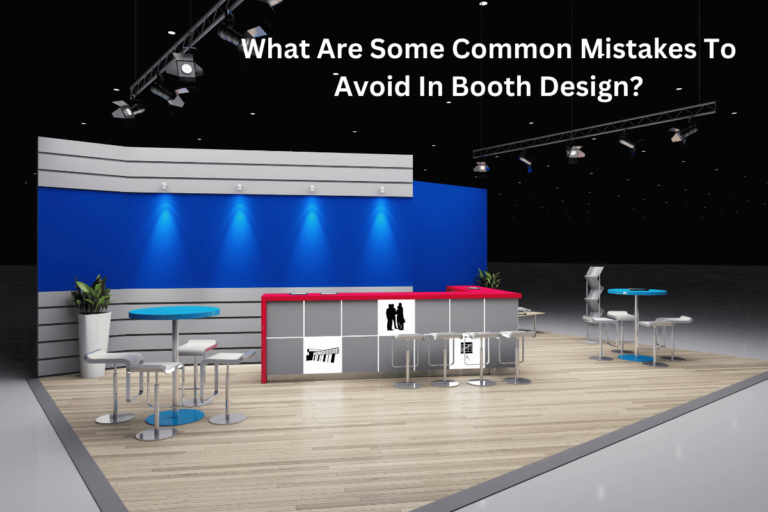How POS Visual Merchandising Enhances Branding and Business Skills
Whether enhancing brand identity or driving sales in the competitive retail environment, point of sale (POS) visual merchandising makes a significant impact. From custom point of sale displays to effective visual merchandising strategies, creating immersive brand experiences shapes purchasing decisions and relationships with customers. In addition, The act of creating and executing point of sale merchandising sharpens essential business competencies, such as strategic planning, problem-solving, and cross-functional collaboration.
In this discussion, we’ll explore how POS visual merchandising not only shapes branding but also sharpens business acumen. We will deconstruct how custom retail displays become brand ambassadors, increase engagement, and adjust to emerging trends. Whether you’re an entrepreneur or a corporate marketer, understanding POS visual merchandising is key to success in retail. Let’s dive deep into how this dynamic field can change the way we approach branding and building business skills development.
Leveraging POS Displays to Strengthen Brand Identity
Emphasizing Brand Values through Visual Cues
POS displays do more than just showcase your products—they serve as brand ambassadors. Through strategic custom retail displays, a business can effectively communicate with its customers regarding the core values and ethos of the business. For instance, a company focused on sustainability might use eco-friendly materials in their POS displays, instantly conveying a commitment to environmental protection.
Consistency Across Channels
In this omnichannel retailing environment, the bastion of consistency has to be brand consistency—right from online platforms to in-store experiences. A strong point of sale visual merchandising goes a long way in building exactly that. Hence, it also ensures that this POS merchandise is conveyed with the same design elements, color schemes, and messaging used on your online presence, creating a cohesive brand image across all the touchpoints for your customers.
Case Studies of Effective POS Branding
Let’s consider an example from real life of how leading brands make use of POS merchandising for brand awareness and brand loyalty:
Coca-Cola’s Iconic POS Displays: Coca-Cola’s point of sale displays are recognizable globally. Its characteristic red color, dynamic typography, and lifestyle imagery combined in tailored retail displays have helped drive its global brand recognition to 94%. This case study demonstrates how consistent and strategic POS visual merchandising can create a lasting brand impact.
Enhancing Customer Engagement and Driving Sales
Interactive Displays
Interactive point of sale display elements significantly increase customer engagement. Customized POS displays attract customers to products, encouraging them to spend more time engaging, which ultimately leads to higher sales conversion rates.
The Role of Sensory Appeal
Effective point of sale visual merchandising does not stop at its looks. It incorporates numerous sensory elements, from light to touch and even smell, to be immersive with the customer’s experience of shopping. A multi-sensory approach effectively influences purchasing decisions.
Interesting Fact: Sensory-appealing POS displays can increase sales by up to 30%.
Analytics-Driven Merchandising
In the era of big data, using customer analytics to drive POS merchandising strategy is a modern and forward-looking approach. Analyzing customer behavior and preferences allows retailers to design POS displays that resonate with their target audience and boost overall sales performance.
Data Point: Data-driven POS merchandising strategies can lead to a 19% increase in sales.
Developing Business Skills through Visual Merchandising
Strategic Planning and Execution
This kind of effective POS merchandise requires strategic thinking, management of a project, and attention to detail. These competencies are essential in visual merchandising and equally critical for broader business success. Participating in the design and execution of custom retail displays fosters these essential business skills.
Collaboration and Teamwork
point of sale visual merchandising is rarely handled in isolation. It often requires collaboration between marketing, design, and sales teams. The diverse skills required of these functional groups foster the development of essential soft skills like communication, negotiation, and project coordination—crucial business competencies.
Problem-Solving and Adaptability
The world of POS merchandising presents daily challenges that require problem-solving skills, such as space constraints calling for innovative design, last-minute changes requiring plan adaptations, or tight budgets demanding creative resource use. The ability to overcome these kinds of hurdles makes one more adaptive and creative. For example, the sudden shortage of some stock may mean one has to revise the planned display immediately, hence gaining very critical skills in decision-making. Such experiences instill in a person a resilient, innovative mindset that in business can be extremely valuable in many scenarios and are therefore highly prized.
Measuring the Impact of POS Visual Merchandising
Key Performance Indicators (KPIs)
Tracking the right KPIs is crucial to ensuring that point of sale displays are effective. This may include:
- Customer engagement rates
- Sales lift attributed to POS displays
- Brand Recall Metrics
The continuous monitoring of these indicators helps fine-tune the POS visual merchandising strategy for optimum performance of the business enterprise.
ROI Analysis
One has to measure the ROI regarding visual merchandising initiatives to justify expenses and set a lead-on strategy for the future. Successful POS campaigns deliver an impressive average 5:1 ROI, giving a real feel for just how effective well-executed point of sale displays can be.
Continuous Improvement
The retail landscape is dynamic, and so must your POS visual merchandising strategies. The retail space requires frequent audits and incorporates customer feedback to fine-tune the strategy. Consistently reassessing and redeveloping your custom point of sale displays will drive continued success and brand growth.
Future Trends in POS Visual Merchandising
Integration of Technology
The future of point of sale merchandising is digital. From augmented reality to digital signage and smart displays—technology will take over the way brands reach customers at the point of sale. Innovative and engaging, new technologies enable the creation of interactive and highly personalized shopping experiences.
Sustainability Considerations
The role of eco-friendly material in POS merchandise is growing in importance as consumers are becoming conscious of the environment. Brands that adopt sustainable practices in their point of sale displays appeal to the environmentally aware customer and, at the same time, demonstrate corporate responsibility.
Personalization at Scale
With data and AI, brands have moved toward the personalization of POS experiences as individualized as possible in accord with every taste of a customer. Smart displays can recognize shoppers and offer individually tailored product recommendations and price communications that will create a memorable shopping experience and build brand loyalty. As AI refines this further, that is setting a new standard in retail merchandising: every interaction feels uniquely crafted for the customer. This data-driven approach is a key differentiator in the competitive retail landscape and speaks to a future of highly personalized shopping experiences.
Conclusion
POS visual merchandising is much more than mounting a display of products. Rather, it is a strategic tool for brand identification, a sales booster, and a fundamental business acumen enhancer. Through the use of custom POS displays and the latest point of sale merchandising techniques, businesses can create truly immersive retail experiences that really speak to customers and set a brand world apart from its nearest competition.
Looking ahead, technology integration, sustainability, and personalization will be some of the major drivers that will truly shape the POS visual merchandising landscape. By remaining ahead in these trends and continuously fine-tuning their strategies, businesses will not be left behind within the evolving landscape of retail.
FAQs
How can small businesses effectively implement POS visual merchandising on a limited budget?
It’s where the small guys can focus on creativity rather than pricey materials. Color psychology, clever product arrangement, and DIY elements come together to create impactful custom POS displays. Just remember to keep the key brand messages forefront and the look consistent across all your point of sale merchandise.
What are the common mistakes to avoid in POS visual merchandising?
Common pitfalls are overcrowded displays, inconsistent branding, and lack of clear messaging. Do not have too many colors or fonts in your point of sale displays; they can confuse customers. Always make sure your POS merchandise is clean, well-maintained, and regularly kept up-to-date.
How does POS visual merchandising contribute to the overall marketing strategy?
It’s the final touchpoint along the customer journey: point of sale visual merchandising. It resurrects the marketing message and builds brand recall, something that can very strongly influence purchase decisions. Hence, effective point of sale displays help in bridging the gap between brand awareness and sales conversion; thus, they form an important part of the overall marketing strategy.







